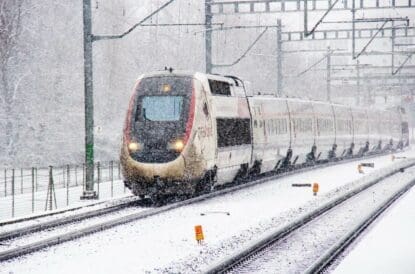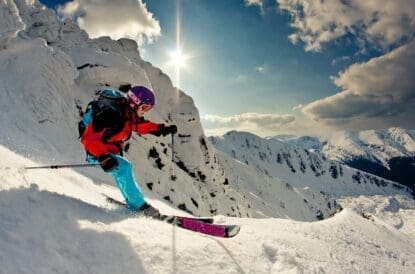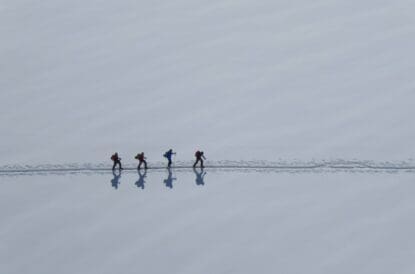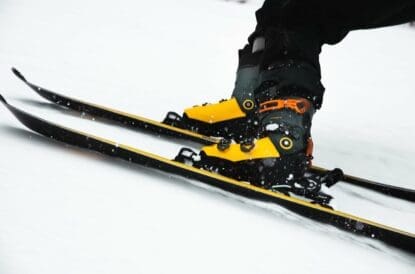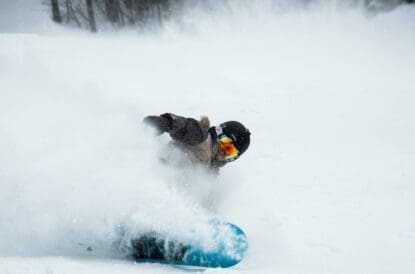The fashion industry is one of the most polluting industries, responsible for a considerable consumption of water and energy, and creating a huge volume of waste.
This extends to many aspects of kitting yourself out for your week skiing. A small but significant contributor to the carbon footprint of your week’s skiing, kit and equipment accounts for 16% of the greenhouse gas emissions.
There are several global trends that feed into this problem. The most notable is “fast fashion”, or the idea of buying cheap to fit the latest fashion trends and discarding items, well before their useful end life and wasting considerable materials and resources in the process.
A second issue particularly effect skiing and outdoor fashion and equipment is the wide use of plastic. From the nylon and polyester fabrics used in textiles to the rolls of Gore Tex that keep us dry, plastic is everywhere in the jackets. It is even more tricky to handle in skis, where the fusion of plastic to other material such as metal and wood, make disposing of them difficult once you’ve grown out of them or upgraded to better pair.
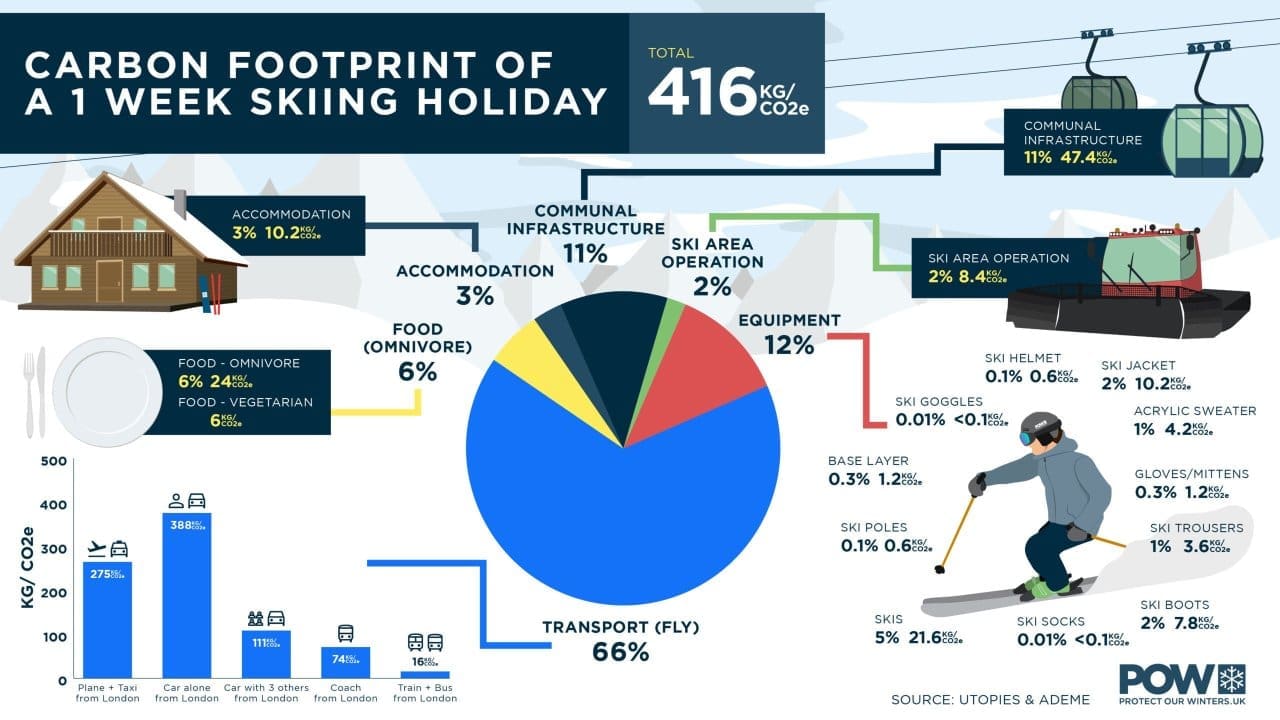
This graphic shows the results of a study conducted on behalf of the French Government by La Clusaz, Le Grand Bornand and Tignes ski resorts, translated and updated for the UK ski market by Protect Our Winters UK (POW). The full study – available in French – is available here.
Protect Our Winters
So how do we solve this problem? When it comes to buying a new ski jacket, there is a step-by-step process to consider ensuring you can lower you carbon footprint related to ski kit and equipment.
At the 2024 ski test, the Ski Club was impressed to see the first ever “sustainable” skis hit the market – those that are either recyclable, or have had a recipe change to reduce waste, greenhouse gas emissions and resource consumption.
Step 1: Repair
To begin with, consider whether you need a new ski jacket at all. Many bits of equipment can be repaired, such as sewing up tears or seams, or re-laminating bits of waterproof material. Sometimes, this can be done under a warranty supplied by the brand, otherwise there are several reputable third-party repair companies that will repair ski gear to high standards.
If the jacket really is done for, move on to the next stage.
Step 2: Rent New Gear
It is easier than ever to rent ski gear, with companies like EcoSki offering high quality ski gear for rent. This gives you the opportunity to get a hold of the latest fashions and technology, without either burning a hole in your pocket or the planet. As an added bonus, EcoSki only work with brands that meet their own high environmental standards, meaning you can guarantee access to environmentally friendly ski gear for less.
Step 3: Buy Second Hand
EcoSki, WhoSki and Bluebird Exchange all specialise in offering second hand ski gear, often in really good condition. You can also check out the old classic E-Bay, or comb your local charity shops. By extending the lifespan of a product by reusing it as much as possible, you can ensure that as little as possible goes to waste
Step 4: Buy New and Buy Sustainable
And finally, if you have to buy new, buy sustainably. Many brands are now transitioning to offering environmentally sustainable products, in particular cutting out plastic as part of the production process, or ensuring they use recycle plastic and making the products themselves recyclable. Brands include Mont Gele Gear, Ortovox and Planks. EcoSki and WhoSki have also compiled a full directory of brands producing sustainable ski and snowboarding gear.
Summary
When looking to sustainably use and re-use ski gear, consider the following:
- Look to repair your gear as much as possible – you might be able to do this for free under a brand’s warranty programme
- Ski gear makes up over 10% of the greenhouse gas emissions of a single day skiing
- Sustainable skis have hit the market for the first time – without a loss of performance
- If you have to buy new, buy sustainable – many brands are transitioning to environmentally friendly materials and production, meaning this is now easier than ever.


